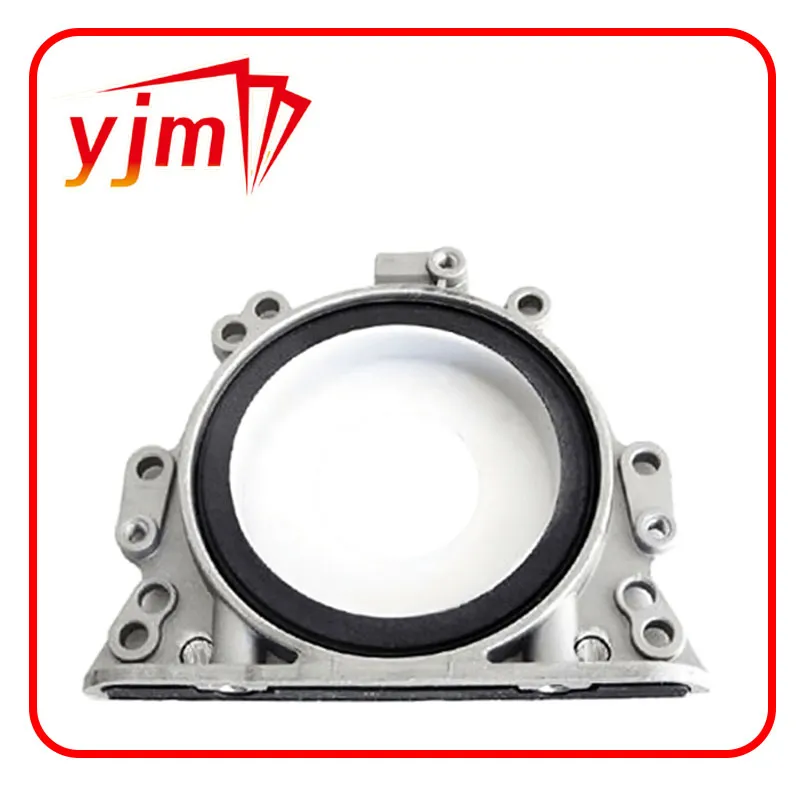crankshaft rear main seal
Understanding the Importance of the Crankshaft Rear Main Seal
The crankshaft rear main seal is a critical component in an internal combustion engine, playing a vital role in maintaining the efficiency and longevity of the engine. While often overlooked during routine maintenance, understanding the function and importance of this seal can prevent costly repairs and ensure the optimal performance of your vehicle.
What is the Crankshaft Rear Main Seal?
Located at the rear of the engine's crankshaft, the rear main seal is a circular seal that prevents engine oil from leaking out of the crankcase. It serves as a barrier between the crankshaft and the engine block, effectively containing the oil supply that lubricates the moving parts of the engine. This seal is typically made from durable materials such as rubber or silicone, designed to withstand high temperatures and pressures found within the engine.
Function and Importance
The primary function of the crankshaft rear main seal is to retain oil within the crankcase. Oil is crucial for lubricating the various components of the engine, minimizing friction, and preventing excessive wear. If the rear main seal fails, it can lead to significant oil leaks, which not only reduces the oil level but can also create a mess and lead to environmental concerns.
Moreover, a leaking rear main seal can result in a drop in oil pressure, causing insufficient lubrication throughout the engine. This may lead to severe engine damage over time, including bearing failure and catastrophic engine failure. Therefore, ensuring that the rear main seal remains intact is essential for the overall health of the engine.
Signs of a Failing Rear Main Seal
Car owners should be vigilant for signs that the rear main seal may be failing. One of the most common indicators is an oil leak at the rear of the engine, which can accumulate on the transmission or the ground beneath the vehicle. Additionally, if you observe a drop in oil pressure or notice an increase in engine noise, it may indicate that the seal is allowing oil to escape.
crankshaft rear main seal

Another sign of a failing rear main seal is the presence of oil residue or a wet appearance around the transmission bell housing. In severe cases, the engine might also emit a burning smell if leaked oil comes into contact with hot engine components.
Replacement Process
Replacing a rear main seal is generally a labor-intensive process requiring the removal of the transmission or the engine. This can translate into significant labor costs, making it essential to address any issues early on before they evolve into more serious problems. While some experienced DIY mechanics may attempt the replacement, most vehicle owners will need to take their car to a professional mechanic.
Preventive Measures
Preventive maintenance is key to prolonging the life of the crankshaft rear main seal. Regular oil changes and using the correct oil type can minimize strain on the seal. Additionally, inspecting the engine for signs of wear and tear can help catch any potential issues early on.
It’s also essential to monitor the vehicle’s oil levels and look for any unexpected drops. If an oil leak is detected, it’s crucial to diagnose the source as soon as possible to prevent damage to the rear main seal and other engine components.
Conclusion
The crankshaft rear main seal may be a small but mighty component of an engine, playing a crucial role in its overall performance and integrity. Understanding its importance and staying vigilant for signs of failure can save car owners from expensive repairs and ensure the longevity of their vehicles. Regular maintenance and timely intervention are key to keeping this essential component functioning properly, helping ensure a smooth and efficient ride for years to come. Investing in the care of your engine today will pay dividends in the long run, securing both performance and reliability.
-
Simplifying Oil Changes: A Comprehensive Guide to Oil Drain Plugs and Their Variants
News Aug.04,2025
-
Mastering Oil Drain Maintenance: Solutions for Stripped, Worn, and Upgraded Oil Plugs
News Aug.04,2025
-
Fixing Oil Pan Plug Issues: Leaks, Stripped Nuts, and the Right Replacement Solutions
News Aug.04,2025
-
Everything You Need to Know About Oil Drain Plugs: Sizes, Fixes, and Upgrades
News Aug.04,2025
-
Choosing the Right Oil Drain Plug: A Guide to Sizes, Materials, and Drain Innovations
News Aug.04,2025
-
A Complete Guide to Automotive Drain Plugs: Types, Problems, and Innovative Solutions
News Aug.04,2025
-
The Ultimate Guide to Car Repair Kits: Tools and Essentials Every Driver Should Own
News Aug.01,2025
Products categories















